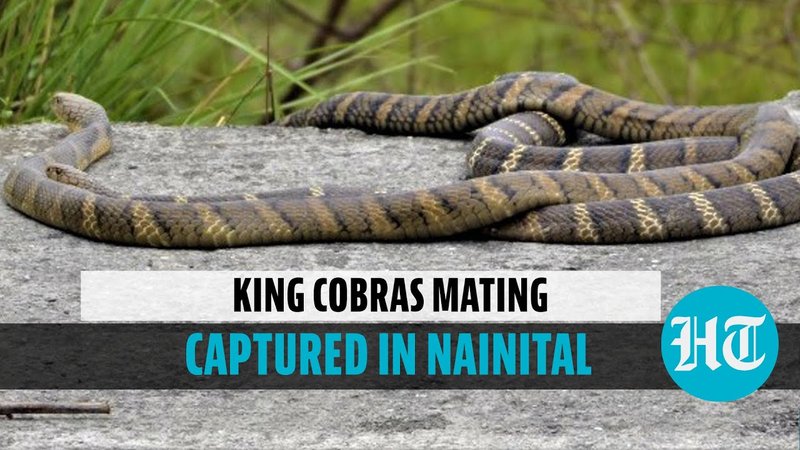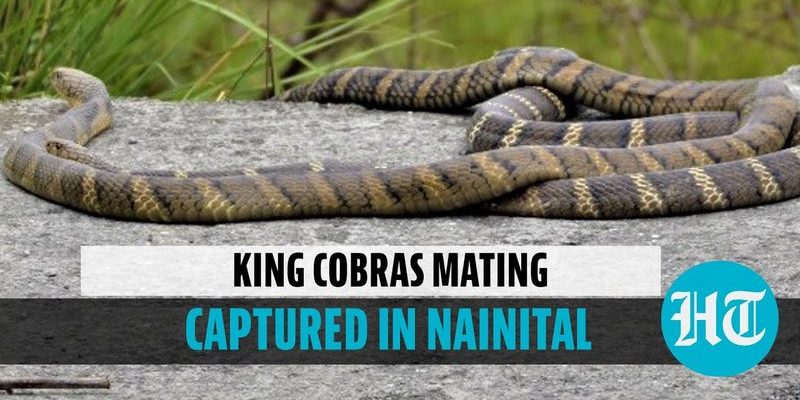
King cobras aren’t just your average snakes; they’re the longest venomous snakes in the world, reaching lengths of up to 18 feet! You could think of them as the undisputed heavyweight champions of the serpent world. Understanding how these fascinating reptiles reproduce gives us insight into their life cycle and the strategies they employ to ensure their species thrives. Let’s dive into their unique breeding rituals and reproductive strategies, step by step.
Understanding King Cobra Mating Rituals
The mating season for king cobras typically occurs between January and April, which aligns with the warmer months. During this time, male cobras begin to seek out females in their territory. Imagine a romantic drama where the males strut their stuff, showcasing their strength and agility. It’s not just about finding a mate; it’s also about proving who’s the top contender for the job.
During courtship, males engage in a fascinating behavior called “courtship wrestling.” This isn’t your typical dance; it involves two males twisting around each other, trying to gain dominance. It’s like a competitive sport where the strongest snake wins the opportunity to mate. These displays can be intense, sometimes lasting for hours.
Once a male successfully establishes dominance, he will approach a female. Interestingly, the female is quite selective. She might show interest by lifting her head and flicking her tongue. If she’s receptive, they engage in copulation. The actual mating can take several hours and is a crucial step in the reproductive cycle.
Egg-Laying and Nesting Behavior
After mating, the female king cobra will lay her eggs, which is a significant moment in her life. King cobras are unique among snakes because they exhibit parental care. Rather than abandoning their eggs, females create a nest using their own bodies and surrounding materials like leaves and earth.
Typically, a female can lay anywhere from 20 to 50 eggs. This can vary depending on her health and size. The eggs are laid in a coil, which helps the female keep them warm. She will stay nearby and even wrap around the eggs to protect them from potential threats. Picture a protective mother keeping her hatchlings safe in a cozy little fortress.
Incubation lasts about 60 to 90 days, depending on temperature and humidity. If conditions are right, you’ll soon hear the soft chirping of baby snakes breaking out of their eggs. This moment is a thrilling reveal, as the female’s efforts culminate in a new generation of king cobras.
Development of Young King Cobras
Once the eggs hatch, the young king cobras are left to fend for themselves right away. It’s a tough world out there! Hatchlings are about 2 feet long and already possess a full set of fangs filled with venom. They need to quickly learn how to hunt and protect themselves.
The young snakes primarily feed on small prey like lizards and rodents. This is crucial for their growth and survival. Interestingly, there’s a stark difference in behavior between young and adult king cobras. Young ones tend to be more solitary, avoiding confrontations while they build their strength.
As they grow, which can be pretty rapid, they start to mimic the adult behaviors to a degree. It’s almost like watching a teenager learn how to navigate the world. They learn the skills necessary for survival, gradually transforming into the formidable predators they’re destined to be.
Challenges and Threats to Reproductive Success
While king cobras are fascinating creatures, they face several challenges that can impact their reproductive success. Habitat loss, primarily due to human encroachment and deforestation, poses a significant threat. When natural habitats are destroyed, it becomes harder for king cobras to find suitable nesting sites and food.
Predation isn’t just a problem for young snakes; even adult king cobras can fall prey to larger animals, including other snakes. While they are at the top of the food chain, they must constantly be on alert. Here’s the thing: if a female is unable to reproduce due to environmental factors or stress, it can jeopardize the entire population.
Additionally, climate change is altering ecosystems, affecting the availability of prey and suitable nesting conditions. As temperatures fluctuate, it might make it harder for king cobras to thrive and reproduce effectively. This dynamic system underscores just how interconnected their survival is with their environment.
The Importance of Conservation Efforts
Given the challenges faced by king cobras, conservation efforts are more crucial than ever. Protecting natural habitats and promoting biodiversity can significantly impact their survival. Organizations worldwide are working hard to create awareness about the importance of these magnificent snakes.
You might be wondering how you can help. Supporting wildlife sanctuaries, participating in conservation programs, and advocating for habitat protection can all make a difference. Every effort, big or small, contributes to ensuring that future generations can admire these beautiful creatures in their natural environment.
Moreover, education plays a vital role. By spreading knowledge about king cobras and their behavior, we can foster a better appreciation for their place in the ecosystem. When people understand the importance of these snakes, they’re more likely to act in ways that protect them.
The breeding and reproductive behavior of king cobras is a captivating topic that showcases the wonders of nature. From their elaborate mating rituals to the protective care of mothers, these reptiles exhibit behaviors that echo the complexities of life itself. Understanding these behaviors is not just fascinating; it’s crucial in fostering conservation efforts to protect them and their habitats.
As we continue to learn more about king cobras, let’s keep in mind the importance of treating our natural world with respect and care. Through awareness and action, we can help ensure that these incredible snakes continue to thrive in their environments for years to come.

